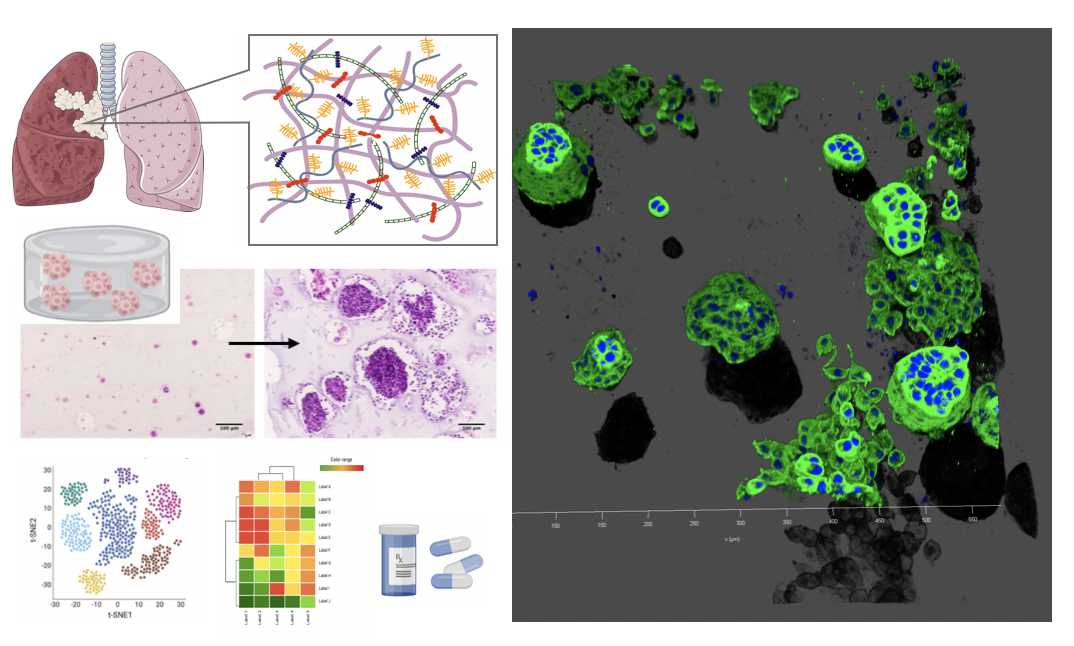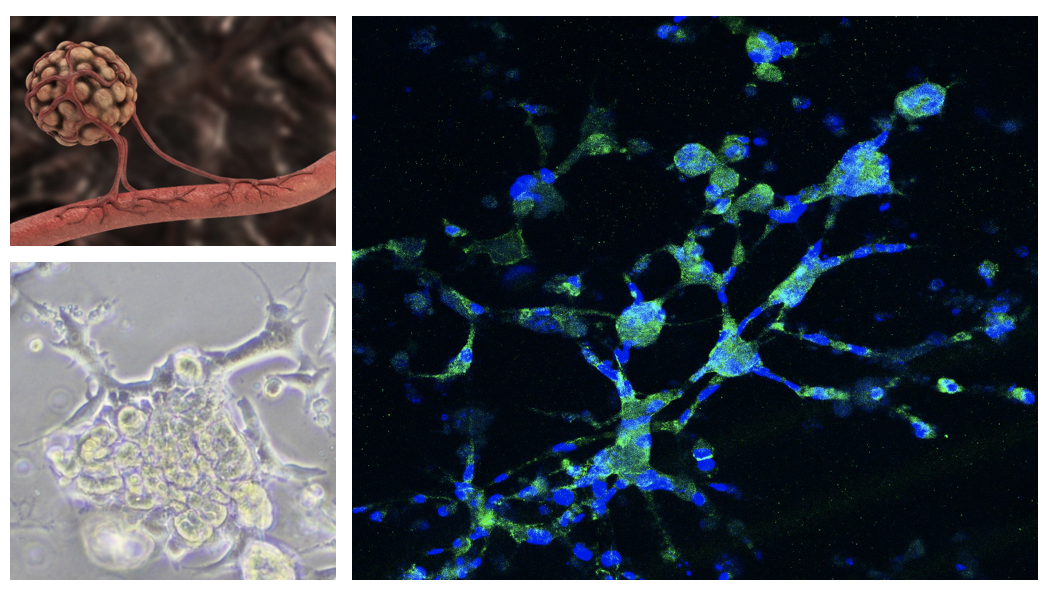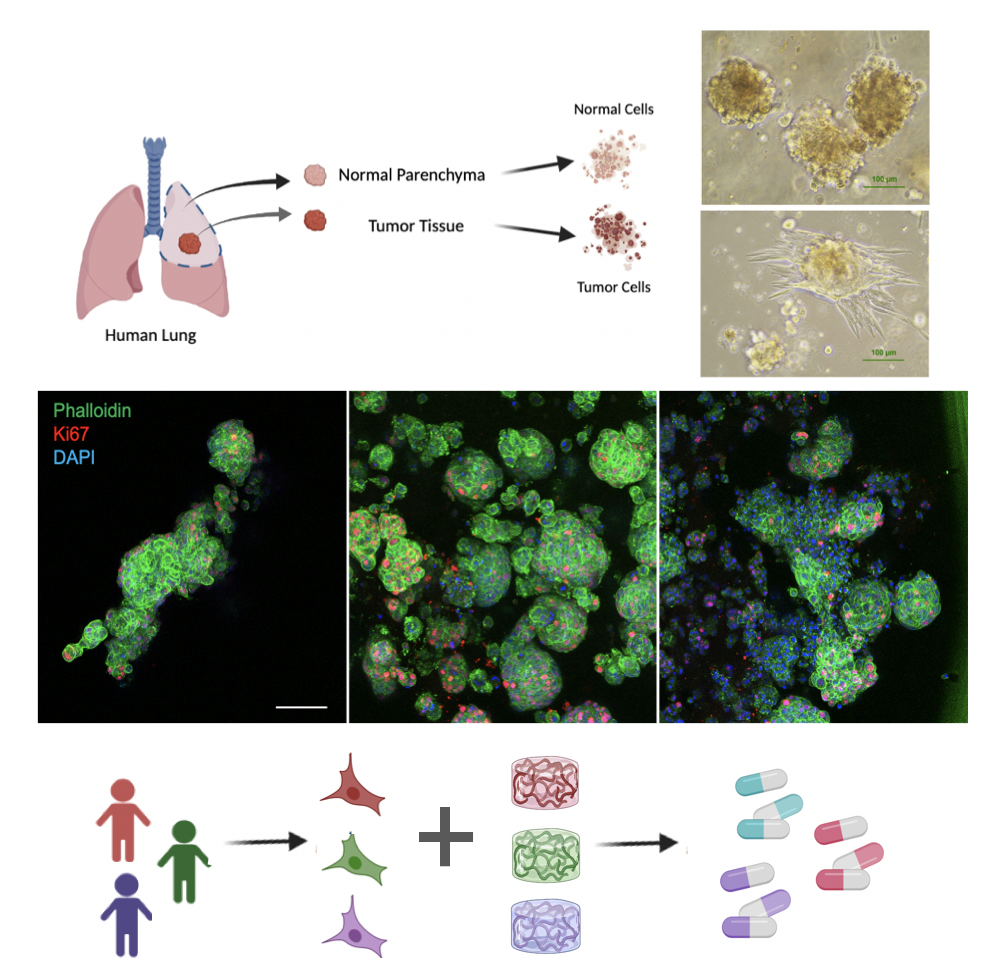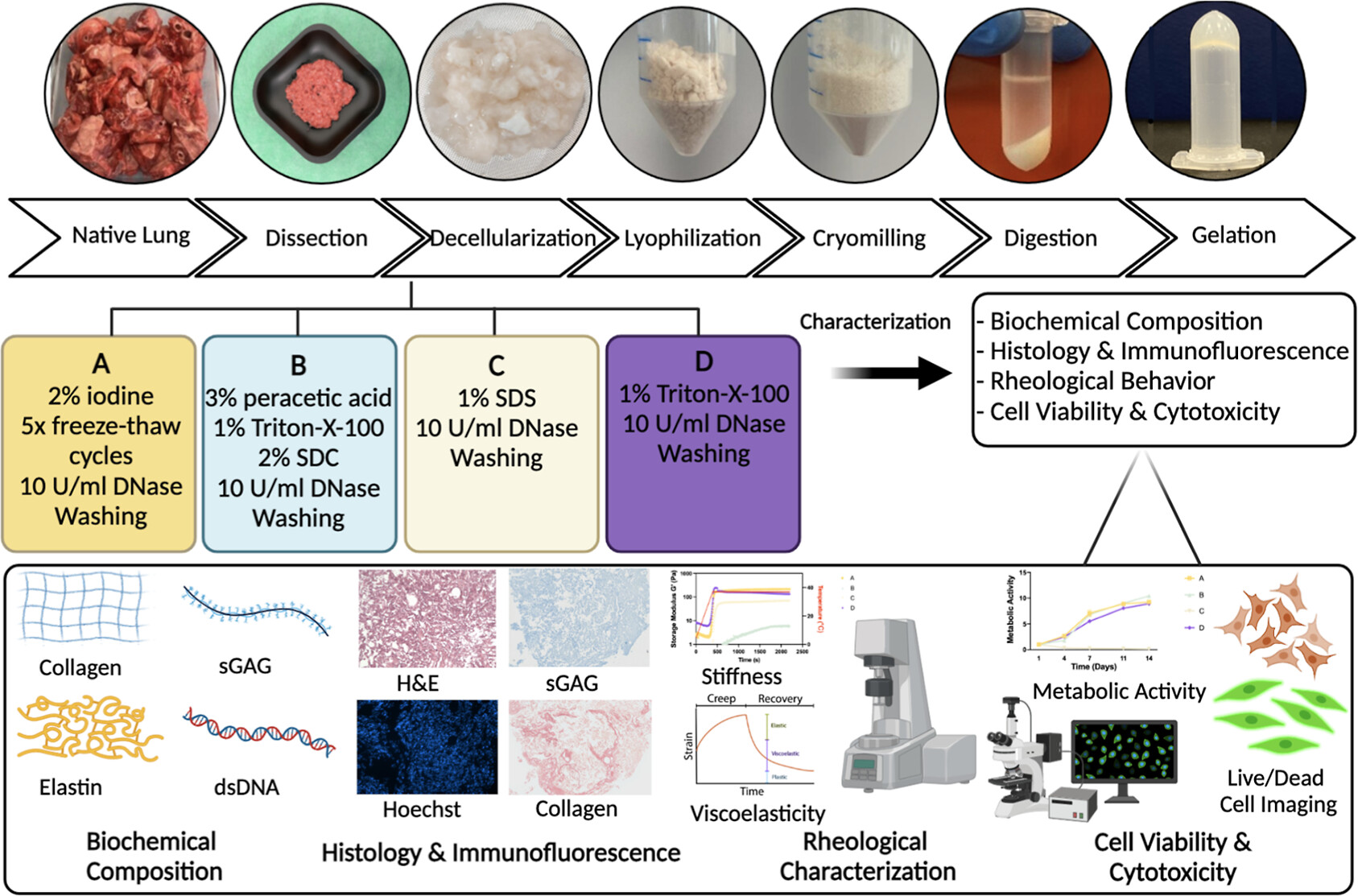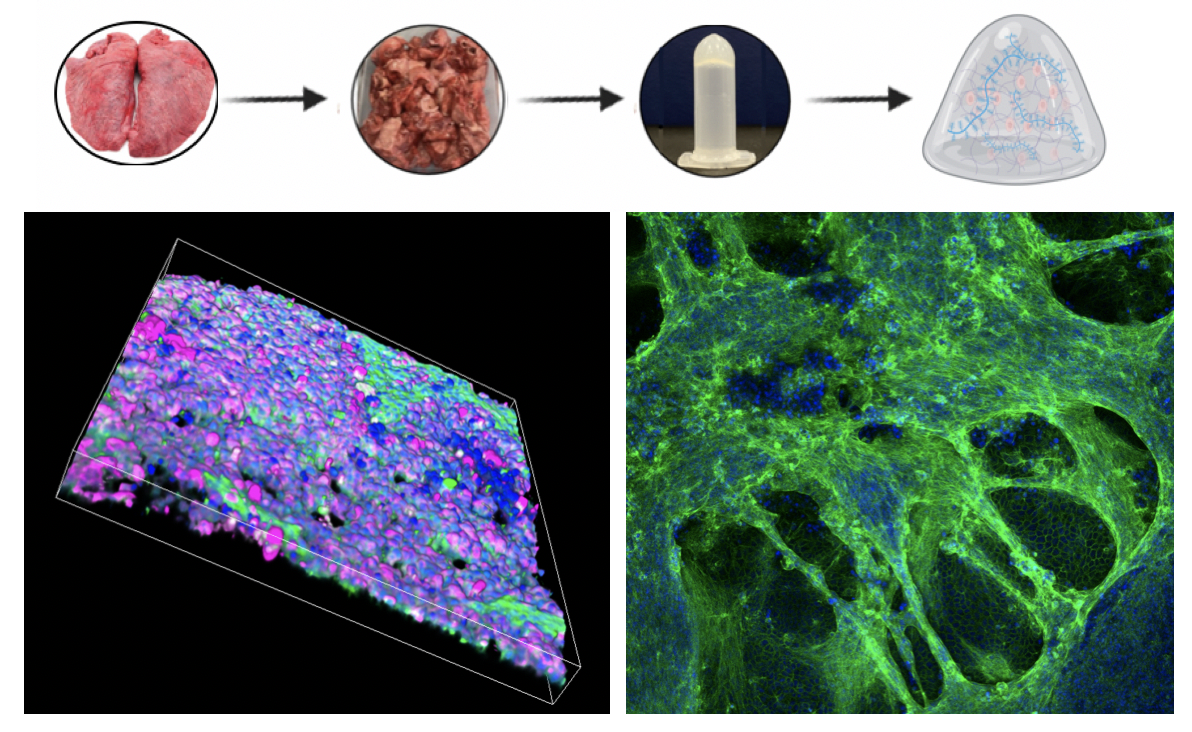Bioengineered Matrices Mimicking the Tumor Microenvironment
|
Tumor tissues are marked by aberrant changes in their extracellular matrices (ECM) when compared to healthy organs. The tumor microenvironment plays a vital role in tumorigenesis and subsequent disease progression. A reliable recapitulation of the tumor ECM in an in vitro 3D model is crucial to advance the current understanding of pathological signaling pathways that govern these complex events. We develop strategies to build biomimetic human tumor models that allow manipulation and control of key aberrant biochemical and mechanical aspects of the tumor microenvironment. Within these models, we pursue systematic studies of cellular events that lead to tumorigenesis, angiogenesis, metastasis and drug resistance. Our approaches are highly interdisciplinary where tissue engineering, material science and molecular biology fields converge for a better understanding of disease-governing phenomena.
Cellular Crosstalk in the Tumor Microenvironment
|
|
Extracellular matrix plays a vital role in regulation cellular interactions in both native and disease tissue milieu. We pursue projects to understand the effect of the aberrant changes in the extracellular matrix of tumor tissues in cellular crosstalk. We are interested in revealing how the communication of tumor cells with endothelium and cancer associated fibroblasts change with ECM composition and mechanics.
Patient-derived Healthy and Tumor Organoids for Precision Medicine
|
Patient-derived organoids offer an invaluable tool for precision medicine with a faithful representation of patient’s unique cellular composition and genetic background. However, ECM is a vital contributor in the tumor microenvironment. Commercial reconstituted basement membranes used in current organoid applications do not fully represent the tissue-specific and patient-specific characteristics of tumor tissues. Hence, we develop approaches for creating patient-inspired 3D ECM models for patient-derived organoids to understand disease governing mechanisms and test therapeutics. We employ next-generation multi-omic approaches dissecting the role of ECM within the highly complex, multi-cellular, heterogenous patient tumor microenvironment.
Developing Organotypic Matrices
|
|
The ECM is the main non-cellular functional unit composed of distinct building blocks organized in a tissue/organ-specific manner. Cellular behavior and function are largely affected by ECM characteristics as cells are in constant interaction with their microenvironment. Reciprocally, cells continuously remodel and modify the surrounding ECM causing both mechanical and biochemical changes. These interactions hold great importance in regulation of physiological and pathological processes in a tissue-specific manner. Given the importance of ECM in controlling cellular behavior, creating 3D in vitro models where native ECM properties are represented has been a popular aspiration in the tissue engineering field. Decellularization of whole native organs offer the preservation of tissue-specific ECM composition and ability for reconstruction into scaffolds such as hydrogels which can be re-populated with desired cell types. We develop reconstituted hydrogels from a plethora of different organs to understand the role of organotypic matrices in regulation of cellular function and behavior in health and disease.
Lung Tissue Engineering
|
|
Lung tissue engineering aims to build in vitro human models that can successfully biomimic the native lung microenvironment using synthetic or natural materials in order to address pulmonary pathologies with low clinical output such as cancer and chronic obstructive pulmonary disease (COPD). The use of decellularized matrices is highly promising with respect to preservation of organ-specific ECM composition and presentation of cell instructive cues in disease modeling. We work on projects which investigate the role of culture dimensionality, organ-specific ECM and air-liquid interface conditions in functionality of engineered lung tissue models.
Funding Sources
| We are grateful for the generous support of the following funding sources: | |
TUBITAK- 2232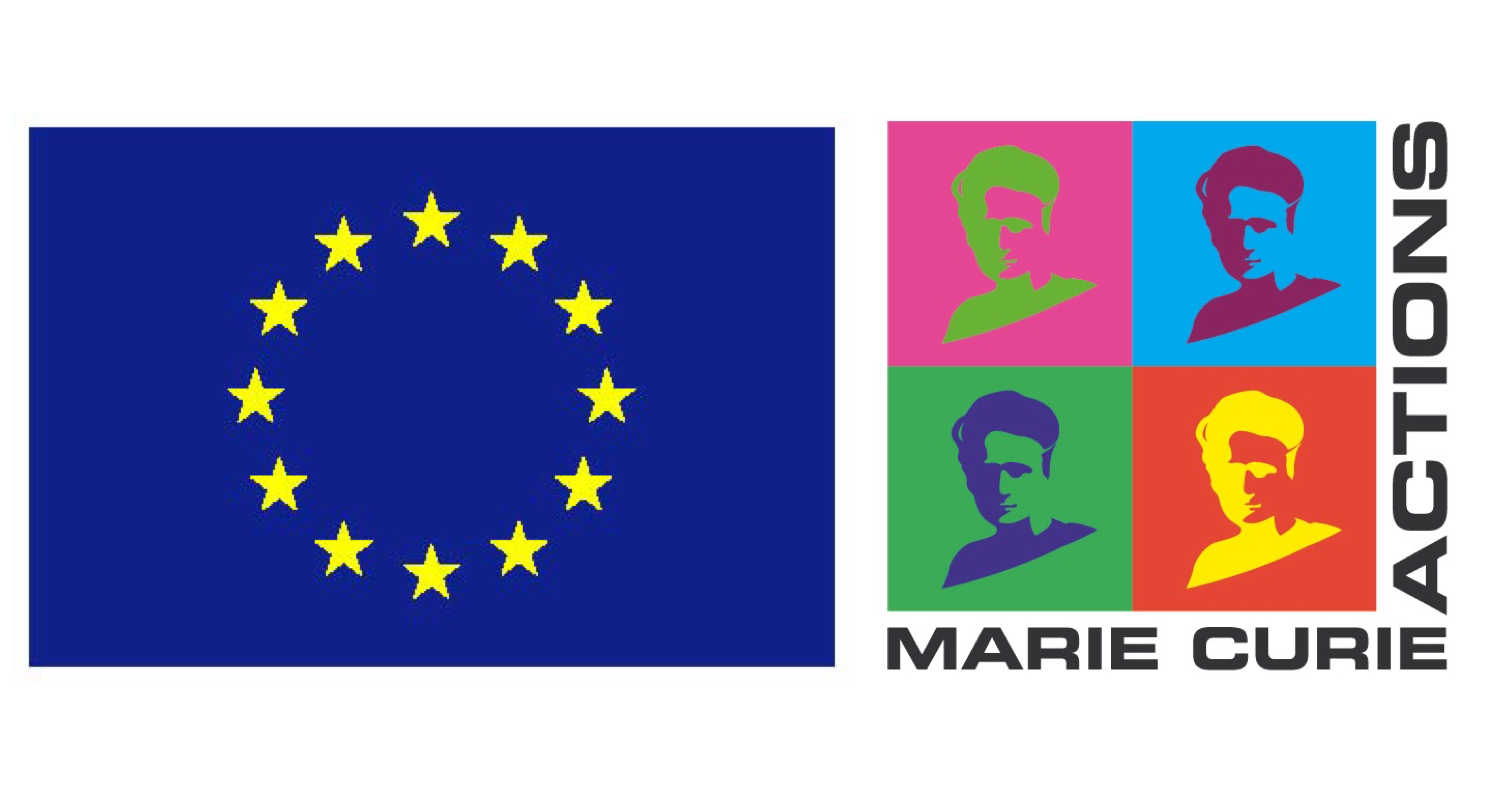
|
